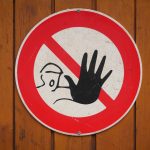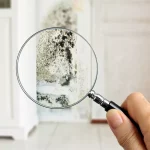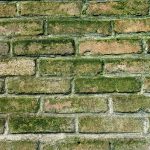Does ear candling actually work?
Or, is it a dangerous practice with little benefit?
Growing up, ear candling was a common practice in my home. My mother touted the benefits and often showed me all the ear wax the candle had collected after a session. As such, I grew up believing ear candling to be a valid therapy.
Many years later, Health Canada banned the sale of ear candles. They suggested that ear candling was both dangerous and ineffective. I was up in arms. It was a conspiracy theory! I thought it was yet another way the government was trying to control our health – forcing us down the allopathic medicine route.
That is until I looked at the reasons why Health Canada decided to ban ear candles…
The benefits of ear candling
I put the word benefits in italics as the so-called benefits have not stood up to laboratory investigation. Instead, the benefits of ear candling are passed from person to person by way of the oldest form of marketing – word of mouth. Your friend tried ear candling, thought it was great, and then suggested you try it. You spread the word to your friends and family. Suddenly we’ve got thousands of people touting the benefits of ear candling.
Before I read the research, I would have told you that ear candling removes wax from your ear. And I’d point to all the wax in the bottom of the candle to prove it. In addition to wax removal, some of the more common claims said to be obtained through ear candling include: (1)
- Toxin removal
- Vertigo treatment
- Sinus infection treatment
- Improving sinus pressure and/or pain
- Treating cancer
Like many ideas, the touted benefits of ear candling was spread through word of mouth. These claims were not verified through rigorous scientific trials. When ear candling was subjected to scientific trials, the efficacy of this modality was quickly called into question.
Why would you want to candle your ears?
The most common benefit ascribed to ear candling is the removal of excess ear wax. I recall mentioning how clear my ears felt after using an ear candle. Naively, I thought this was due to the removal of excess wax.
In reality, outside of rare events, there is no need to remove wax from your ear. Your body is entirely capable of managing ear wax all on its own. When wax build-up is problematic, the recommended first line of therapy should be to use drops to soften the ear wax, not ear candling or syringes. (2)
As it turns out, the ear wax I thought was collected in the ear candle was not in fact ear wax. It was candle wax. Which accumulated from the melting of the candle. As you’ll soon learn, ear candles can’t remove ear wax…
How ear candles work
Ear candles are thought to work through two different modes of action: (3)
- The chimney effect
- The burning candle creates a vacuum that sucks up excess wax, bacteria, and debris.
- Warming of ear wax
- The candle doesn’t draw the wax out via a vacuum effect but instead heats up your ear wax which allows the excess wax to be expelled over the next couple of days.
This is how ear candles are thought to have benefit.
But what do proper laboratory tests indicate?
Can ear candles do what proponents claim?
Do ear candles actually work to remove wax from your ears?
Ear candles are thought to work by the warmth of the flame creating suction through the candle itself. If you’ve ever had fire cupping, you’ll know how fire/heat can create powerful suction. But unlike cupping, there is no way to trap the pressure in an ear candle.
When researchers tested to see if ear candles create suction, they found that ear candles were unable to produce any back-pressure or suction. (3)
Without suction, how could ear candling possibly remove any ear wax?
As it turns out, ear candling doesn’t remove wax from your ears. The whole wax removal thing was likely spread via word of mouth. This is why it becomes so important to investigate claims. They’re not always valid – even when they seem legitimate.
Even after reading that ear candles created zero suction, I still thought that couldn’t be true. There had to be some suction!
So, I lit an ear candle and instead of placing the end in my ear, I placed it on my hand and on a piece of paper. I figured if this suction thing was real, I’d feel it on my hand or at least be able to lift a piece of paper. Niether worked. There was no suction…
Now just because something doesn’t work doesn’t mean it’s dangerous. But in addition to not working, ear candling also had some dangerous side effects. We’ll get into those next…
The risks and dangers of ear candling
Both Health Canada and the FDA in the United States have banned the sale of ear candles. (4, 5)
Why?
Not because they’re pushing you towards allopathic medicine. But because ear candles actually pose a risk. There is a reasonably high likelihood that you could get hurt using ear candles.
Some of the more commonly reported risks and dangers of ear candling include:
- Burns
- Punctured eardrums
- Ear canal blockage by wax
- Hot wax dripping into the ear, onto skin or hair
- Temporary loss of hearing
Health Canada and the FDA are looking out for you. They tested ear candles and found that they didn’t provide benefits. They kept reports of consumers who experienced adverse effects from ear candling.
When they combined the data, ear candling was greatly swayed in favor of high risk and low reward. You’re more likely to injure yourself via an ear candle than you are to glean some benefit.
The conclusion: ear candles do more harm than good. Their use should be avoided. (6)
Is there any benefit to ear candling?
When it comes to removing wax from your ears, ear candling isn’t going to help. In fact, it may actually add wax or ash to your ear – not a stellar outcome if you ask me. But an article in the New York Times suggests there to be an overlooked benefit to ear candling.
The author of the article suggests that ear candling acts as a time of connection among a group of friends. And that the experience of hearing a burning candle in your ear is a path towards tranquility.
I can’t argue that the sound of a fire crackling or time with friends is relaxing. I thoroughly enjoy both those activities. I’m confident researchers can all agree that social connection and stress-reduction strategies improve health outcomes. Especially these days!
But ear candling does not need to be at the center of these gatherings. You could reap the same stress-reducing benefits by simply sitting around a fire with friends. And you wouldn’t have any risk of burns, hearing loss, punctured eardrums, or hot wax finding its way onto your face.
Now, it’s time to hear from you!
What sort of experiences have you had with ear candles?
Leave your answers in the comments section below!




I like that you mentioned that one of the benefits of ear candling is experiencing tranquility during the process. My husband and I are excited to try this out since it’s a trend on social media. Perhaps we could buy some ear candles and try it out during one of our date nights at home. Thanks.